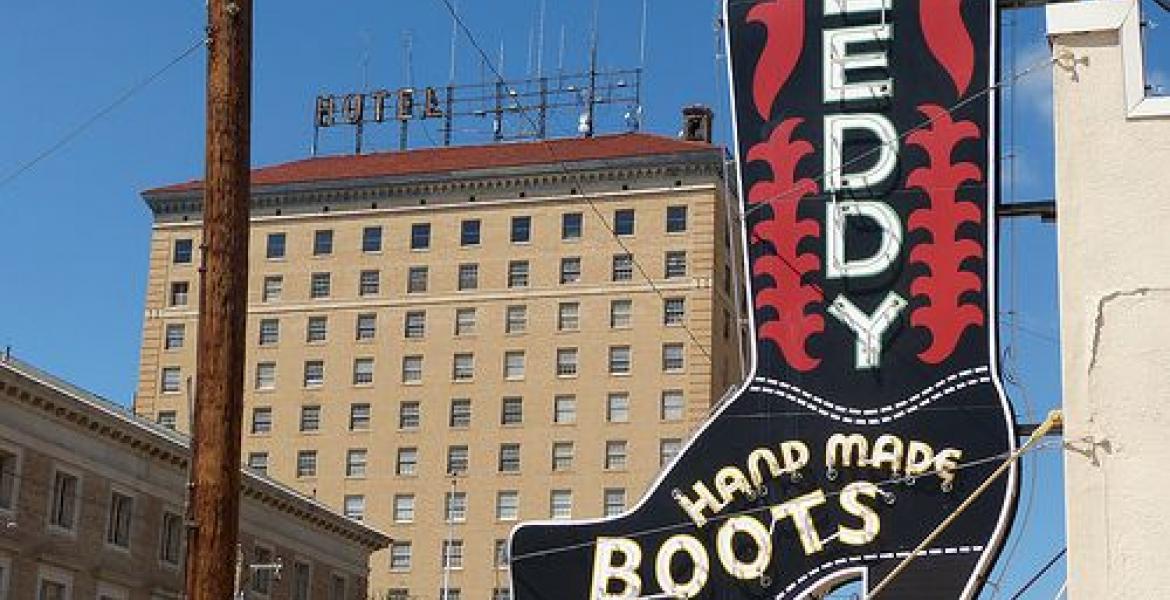CORPUS CHRISTI, TX — The Port of Corpus Christi is open for the Permian Basin’s oil and natural gas. That is what Sean Strawbridge, Chief Executive Officer of the Port of Corpus Christi Authority, said. The Port’s vision statement is to be “the energy port of the Americas.”
Strawbridge noted in an exclusive interview with us last week that Corpus Christi’s port is an export port. Since federal law changed that will allow oil and gas producers to export to other countries, the importance the Port of Corpus Christi has for the overall economic growth of the U.S. is significant, he said. He oversees the port that exports more crude oil than any other port in the country.
“Ninety-five-percent of the world’s population is outside the U.S.,” Strawbridge said. “And Corpus Christi is the gateway to those global markets.” Strawbridge is bullish on not only the sweet crude originating from the Permian Basin disembarking from his port, but also natural gas. Sweet crude is a grade of petroleum, containing less than 0.42 percent sulfur, as defined by the New York Mercantile Exchange.
The Port of Corpus Christi owns and operates 13 public oil docks designed to handle tanker ships as large as 160,000 deadweight metric tons (DWT). There are an additional 16 private oil docks attached to the port’s facilities there, too. This is according to their website.
Strawbridge will be a panelist at the West Texas Legislative Summit Aug. 2 in San Angelo where the topic of discussion will be “Energy: A Landscape of Opportunity.”
Corpus Christi lags Texas’ larger port, Houston, in refining capabilities. Houston can refine about 4 million barrels per day. Corpus Christi can refine 1 million barrels per day. In light of the new export law, however, Strawbridge said his port has embarked on a project that will provide a competitive advantage for Corpus Christi.
The crude export capabilities of the Port of Corpus Christi:
[[{"fid":"43997","view_mode":"wysiwyg","fields":{"format":"wysiwyg"},"type":"media","field_deltas":{"1":{"format":"wysiwyg"}},"attributes":{"class":"media-element file-wysiwyg","data-delta":"1"}}]]
Called the Corpus Christi Ship Channel Improvement Project, it is an effort to allow larger and heavier cargo ships into the channel. The hallmark of the project is to deepen parts of the ship channel from approximately 45 feet in depth to 54 feet. The project also will widen the channel from 400 feet to 530 feet in certain areas. The estimated $350 million project, if ever completed, will make Corpus Christi, already the fourth largest U.S. port, deeper than Houston’s, which is at approximately 45 feet deep.
It makes sense. Bulk liquids like crude, gasoline, and natural gas are heavier than lighter containers that are the primary cargo at Houston.
[[{"fid":"43999","view_mode":"default","fields":{"format":"default","field_file_image_alt_text[und][0][value]":"Pending crude pipelines from the Permian Basin (left side of map) to the Port of Corpus Christi (right side). (RBN Energy at https://rbnenergy.com/midi/crude-pr…)","field_file_image_title_text[und][0][value]":"Pending crude pipelines from the Permian Basin (left side of map) to the Port of Corpus Christi (right side). (RBN Energy at https://rbnenergy.com/midi/crude-pr…)"},"type":"media","field_deltas":{"3":{"format":"default","field_file_image_alt_text[und][0][value]":"Pending crude pipelines from the Permian Basin (left side of map) to the Port of Corpus Christi (right side). (RBN Energy at https://rbnenergy.com/midi/crude-pr…)","field_file_image_title_text[und][0][value]":"Pending crude pipelines from the Permian Basin (left side of map) to the Port of Corpus Christi (right side). (RBN Energy at https://rbnenergy.com/midi/crude-pr…)"}},"attributes":{"alt":"Pending crude pipelines from the Permian Basin (left side of map) to the Port of Corpus Christi (right side). (RBN Energy at https://rbnenergy.com/midi/crude-pr…)","title":"Pending crude pipelines from the Permian Basin (left side of map) to the Port of Corpus Christi (right side). (RBN Energy at https://rbnenergy.com/midi/crude-pr…)","class":"media-element file-default","data-delta":"3"}}]]
Above: Pending crude pipelines from the Permian Basin (left side of map) to the Port of Corpus Christi (right side). (RBN Energy at https://rbnenergy.com/midi/crude-projects/map)
Getting the project off the ground is a multi-decade effort. The first application to deepen the port to 54 feet was made in 1989 and authorized by congress in 1990.
The U.S. Army Corps of Engineers, that regulates and oversees U.S. ports, estimated the latest bid for deepening the port to come in at $49 million, Strawbridge said. Instead, the only two bidders for the project submitted proposals for $85 million and $112 million respectively, both outside the Corps’ budget.
“The project has hit some speed bumps,” Strawbridge said.
The Channel Improvement Project:
[[{"fid":"43998","view_mode":"wysiwyg","fields":{"format":"wysiwyg"},"type":"media","field_deltas":{"2":{"format":"wysiwyg"}},"attributes":{"class":"media-element file-wysiwyg","data-delta":"2"}}]]
The federal government and the port authority fund the project jointly, where the port authority is putting up 31 percent of the cost, the feds the rest. The federal dollars aren’t guaranteed, Strawbridge said. While vying for limited federal resources, Corpus Christi is in competition with Charleston, South Carolina; Savanna, Georgia; Jacksonville, Florida; and Boston, Massachusetts.
None of the competitors have pipeline access to the Permian Basin’s sweet crude to export, however. Because of estimates that by 2023 the U.S. will be a net exporter of energy, the Port of Corpus Christi’s project to deepen and widen its channels has “widespread importance to the Coastal Bend Region, the state of Texas, and the nation,” Strawbridge said.
Subscribe to the LIVE! Daily
Required






Post a comment to this article here: